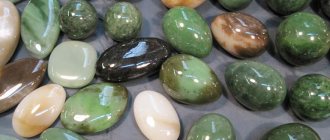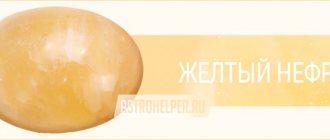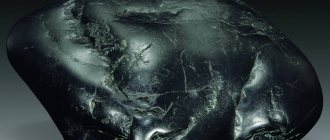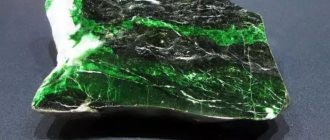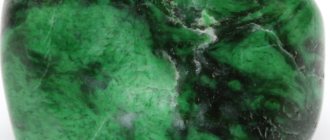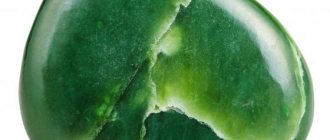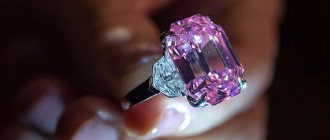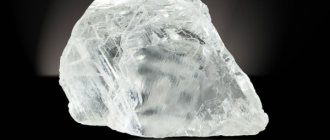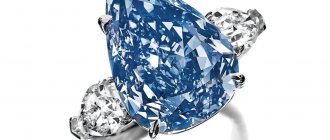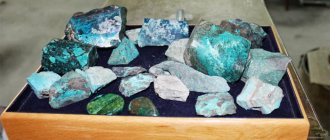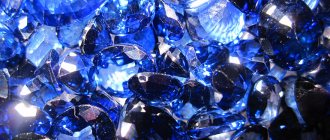Share with your friends!
All over the world we find massive crafted stones. Which sometimes weigh more than 1000 tons! But how exactly did our distant ancestors move these stones to the right place? Did they only use the strength of their hands?
Or perhaps, as some researchers suggest, our ancestors used some now lost technology?
Common sense dictates that all these stones were too heavy to move without the help of some kind of auxiliary device. But it is believed that in those days people did not have the necessary means to transport huge blocks over long distances.
Many similar objects have been discovered in Egypt. Let's talk about them. And at the same time, let’s think about how exactly they were delivered to their current location.
Hardness as a characteristic of a mineral
If we talk about such a property as the hardness of minerals, then it is worth saying that this is the resistance of a substance that its surface exhibits when trying to scratch with a stone or other object. The indicator directly depends on the crystal lattice and the structure of atoms in the stone. But you should also know that such a characteristic as hardness may be variable and depend on factors such as:
- Direction of the stone. A striking example is kyanite. In one case, its hardness is determined as 5, and it is scratched by a knife, and in the other, as 7, and the knife leaves no marks.
- Aggregate state of the stone. For example, cryptocrystalline, finely porous and powdery types of substances have false low hardnesses. Thus, hematite in crystals on the Mohs hardness scale is rated at 6 points, and in the form of red ocher the indicator falls below four.
- Stone deposits. Sapphires mined in Ceylon are harder than rubies, while Kashmir sapphires are softer. This is explained by natural processes during the formation of the stone. And even diamonds from Kalimantan and Wales are harder than those from South Africa.
Determining hardness is done by finding a reference material that it can scratch. Or stones are selected that can scratch it. The scale itself is based on comparison, so it is used to make a rough comparative assessment of the mineral. The Mohs scale works on a softer-harder system and is called relative.
With its help, you can also determine intermediate values of hardness - in this case, the indicator is written as a fraction. For example, the number 8, under which chrysoberyl is classified, means that the stone scratches topaz in the same way that it is scratched by corundum. But garnet is harder than quartz, but softer than beryl and therefore received a value of 7.
The more new stones are discovered, the more the classification expands and intermediate values appear. But the core of the Mohs table remains the same. And the rule still applies: the harder the stone, the more expensive it is.
Hardness is necessary in order to know how difficult the stone processing is. It affects the processes of cutting and polishing. Based on their hardness, stones are used in industry as abrasives, such as diamonds. But one scale is not enough to determine hardness. There are other methods that are more accurate, although the Mohs scale remains the mainstay of jewelry making.
There is a classification that is based on the use of improvised means, for example, a fingernail, a pencil, table salt, a nail, a file, a knife, an iron. To remember the rules of this technique, you should know that the nail leaves scratches on plaster and softer substances. This is how linear hardness appeared, and stones began to be divided into the following groups:
- hard;
- soft;
- medium soft.
According to the classification of linear hardness, minerals are determined as follows:
- talc - 1 - scratchable with a fingernail;
- plaster - 3 - can be scratched with a fingernail;
- calcite - 9 - can be scratched with a copper coin;
- fluorite - 21 - easily scratched with a knife;
- apatite - 48 - difficult to scratch with a knife;
- orthoclase - 72 - damaged with a file;
- quartz - 100 - may scratch glass;
- topaz - 200 - capable of scratching quartz;
- corundum - 400 - scratches topaz;
- diamond - 1600 - cannot be scratched by anything, the absolute hardness of the mineral.
Scientific study and characteristics of minerals
One of the most interesting areas in the study of minerals is gemology, the subject of research of which is only precious stones. Although the term “precious stones” itself is completely arbitrary due to different approaches to determining their properties, it continues to be widely used, both in everyday life and in industry. Traditional or classical gemstones of the first order are diamond, emerald, sapphire, alexandrite and ruby. Other representatives of the mineral world, which are used in jewelry and other industries, fall under the definition of “other precious stones.” In some sources they are mentioned under a different name - “semi-precious stones”, although if we approach this issue from the cost side, then some of them are valued much higher than representatives of the classical group. Strictly speaking, gemstones must meet the following criteria:
• beauty and richness of color, beautiful tints and shine, as well as sparkle; • have a sufficiently high hardness, which allows them to be used for a long period of time, and also be quite rare and unique.
All these criteria, of course, are characterized by a high degree of subjectivity. Indeed, how can one determine whether a given stone is beautiful or not? After all, every person sees beauty differently. But there are still criteria for determining the beauty of a particular sample, which include the following characteristics: absence of flaws, purity and transparency, uniformity of tone and some others.
A few words should be especially said about the color of the mineral, since its value and uniqueness most depend on it. The different color of a mineral is given by the presence in its structure of a very small amount of impurities, both metals and organics. Fluctuations in their content, even in thousandths of a percent, can change the color of the stone to a completely different one. There are times when a stone with an unusual color is worth much higher than a clear diamond.
Titanic
In the list of the most massive objects transported by the human race, pride of place is occupied by the famous floating hotel, whose fate was tragic: already during its first voyage in 1912, the Titanic sank after colliding with an iceberg.
Currently, the oceans are plying such ships as the Oasis of the Seas, which are much larger than the ill-fated giant. However, modern ships do not have to be moved by land: the docks in which they are built are filled with water, and the liners go out to sea on their own.
Built at the Bristol shipyard, the Titanic, weighing 26,000 tons, was at one time the most massive object to ever move on earth. Workers needed at least 22 tons of soap and grease to create a 2.5-centimeter layer of lubricant on the slipway, along which the ship was safely dragged to the water in May 1911.
Titanic / ©Library of Congress/ Robert John Welch
Main parameter
There is one in the properties of a particular mineral that directly determines its practical value and affects the selling price - hardness. This is a purely physical parameter that depends on the internal structure of the mineral and directly affects the durability of its use. It is determined by scratching the surface of the mineral being tested with a reference sample.
Today, several methods for determining the hardness of precious stones are used in the world. The hardness scale proposed by the Austrian scientist F. Mohs gained great popularity. According to this scale, all minerals are divided into 10 groups, with each group corresponding to a hardness index from one to 10. The hardest gemstone, a diamond, has the highest hardness on this scale. The hardness values of ruby and sapphire are an order of magnitude lower. Here it is necessary to clarify that a diamond with a hardness of 10 is much stronger than representatives of the group with a hardness of 9. But the difference in this indicator between the 9th and 8th groups is not so significant. In the practical activity of making jewelry, it is allowed to use precious stones in rings, rings and bracelets up to group 5 inclusive; softer gems are recommended for use in wearable jewelry that does not experience such significant loads.
So, it is a generally accepted fact that the hardest stone on earth is a diamond (cut diamond). However, this statement has its own nuances. The fact is that there are even harder materials, for example, fullerites, which are molecular crystals formed during the polymerization of fullerene molecules under conditions of monstrous pressure (up to 90,000 atmospheres) and temperature. The resulting material has abnormal rigidity and hardness. The structure of fullerite is fundamentally different from diamond and graphite, although it is the same carbon, or rather, its allotropic form.
The hardest materials on Earth
The most durable material in the world, which is harder than diamond, is polymerized fullerite. This material can easily scratch a diamond, as easily as if it were not a precious diamond, but ordinary plastic. This material is a structured crystal, the nodes of which consist of whole molecules rather than small atoms.
Lonsdaleite is also considered a strong material. This is a modification of allotropic carbon, which is close in hardness to diamond. This material was extracted from a meteorite crater. The origin of the material is graphite.
The third position in the hardness ranking is firmly occupied by wurtzite boron nitrite. The crystalline structure provides a high degree of strength to this material.
Nanostructured cubonite, or kingsongite. The unique capabilities of this material have ensured its frequent use in industry.
Carbon-boron nitrite occupies an honorable fifth position in our ranking. The main components of this material are boron atoms, as well as carbon and nitrogen.
